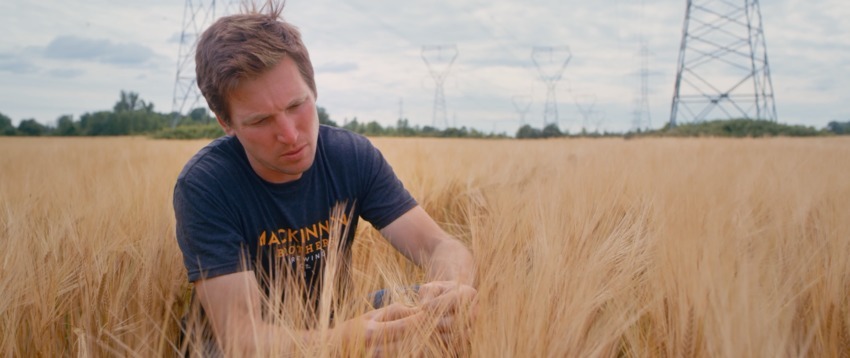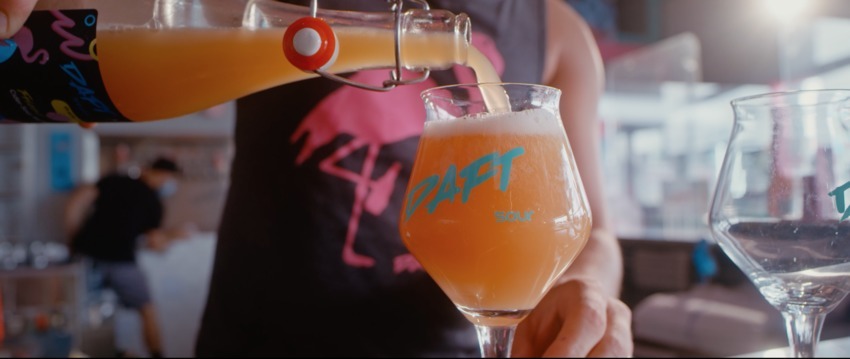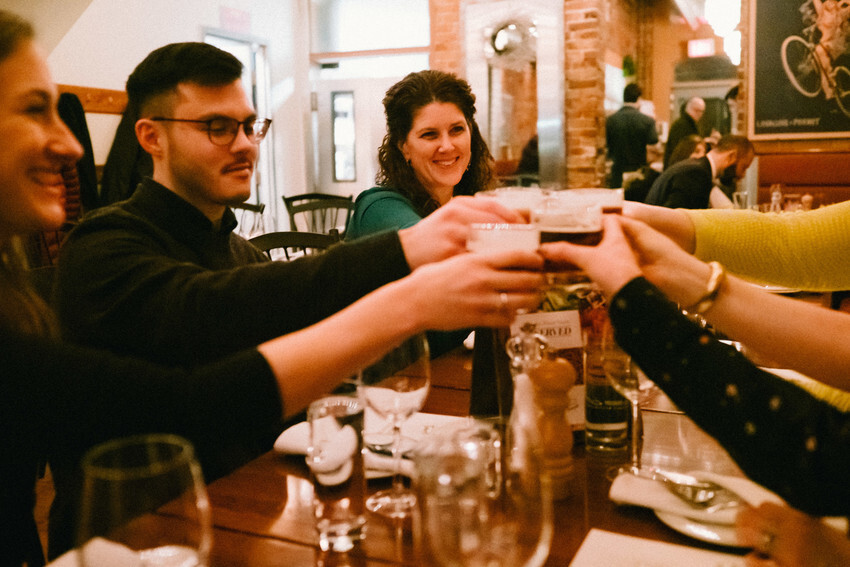Kingston is home to breweries and one cidery including Daft Brewing, Fine Balance Brewing Company, Hard Way Cider Company, Kingston Brewing Company (KBC), MacKinnon Brother’s Brewing Company, Riverhead Brewing Company, Spearhead Brewing Company.
Read below to learn about the history of brewing in Kingston, or watch video profiles on each brewery here.
Eclectic, with an eye towards both tradition and the future.
That’s how Jordan St. John—a local beer historian—sums up Kingston’s current beer scene.
You might be familiar with a few—or all—of Kingston’s breweries. But how exactly did Kingston became such a vibrant beer city? There’s lots of history behind Kingston’s modern brewing scene. Up until the 1800s, Rideau Street in downtown Kingston was known as Brewery Street, in recognition of the dominant industry of the area. Breweries in Kingston can be traced back to the 1790s, but Jordan St. John notes that the first half of the 1800s was the city’s beer heyday.
By the mid-1800s, despite its lack of industrial-scale breweries, Kingston had an array of ales at its small breweries. Soldiers at Fort Henry had a weekly beer ration—British soldiers in Canada were entitled to six pints of beer per day.
Watch this video above on Kingston’s brewing history with a behind-the-scenes look at each brewery in the city.
Due to boiling in the brewing process and sealing bottles, it’s rare for bacteria to thrive in beer and quite obvious if it does. At this time, the alcohol content of beer ranged from eight to 12 percent. Today, a Canadian beer has around five percent alcohol.
Read more: A Guide to Kingston’s Breweries
With its proximity to the St. Lawrence River and shipping routes, the city was able to import alcohol from overseas and distribute it throughout the area. Around 1850 though, everything changed. When the Grand Trunk Railway and the Great Western Railway picked up steam, Kingston breweries began to suffer. St. John explains that larger breweries in city centers like Montreal and Toronto began to export to towns across Ontario and all along the booming Canadian rail line. Kingston had a large enough population to support local breweries but had lost its significance as a brewing city, due to steep competition and railway exports. Industrial-scale brewing took over the greater Canadian beer scene. The few breweries serving the local market in the Victorian era included George Creighton’s Frontenac Brewery on King Street West and Joseph Bajus’s Kingston Brewery on Wellington Street.

There have been calls for generations—one in an 1820 edition of The Kingston Chronicle, to be exact—to protect the brewing industry in Canada. It took some time, but by the 1970s, small breweries were making a comeback. By 1986 Kingston had its first brewpub, the KBC. Throughout the ‘80s and ‘90s, brewpubs steadily became one of the coolest places to be. Why the switch?
Jordan St. John explains that a generation of drinkers around this time remembered brewing traditions from an earlier time, when there were a variety of imports from England and Ireland. At the same time, Miller Lite in the U.S. was introduced: it sold more beer than the entire Canadian beer market (around 26 million barrels). There was a lot of pushback against this kind of homogeneity, resulting in a craft beer revival. People began making extremely small batches of beer based on styles that were only still available in England and Germany. Despite being designed to please a small number of beer-drinkers at first, craft beer caught on—especially in Kingston.
“The thing that makes craft beer catch on,” says St. John, “is the fact that it’s a part of the local community. They can do things in a small, mobile, nimble fashion that other people can’t. The point is that you can make something that is going to be commemorative of a small moment or nothing at all, really. It could just be a brewer’s whim as opposed to making something as standardized as Molson Canadian, which is available everywhere, originally from Montreal, but across Canada, that Canadian branding, as opposed to whatever it is that the KBC came up with on a weekly basis. So, it’s novelty to some extent, but it’s also quality. There’s a community aspect to it.”

Microbreweries slowly developed over the 1980s and ‘90s, although they weren’t necessarily created to produce what we think of today as “craft beer.” They were simply dedicated to offering an alternative to corporate brands “that no longer adhered to a sense of place,” according to a history of Ontario breweries co-written by St. John. Brewpubs (restaurant and brewery in one) were made legal in Ontario in October of 1985.
There were a lot of failures in microbreweries in the ‘90s. Since there had been no local breweries for decades before, the public wasn’t used to such distinct flavours in a drink. Furthermore, malt extract brewing systems were the norm for early brewpubs because of their affordability and accessibility. But this type of brewing often resulted in varied quality and some less-than-tasty beers. The brewpubs that remained popular were often brewed with grain. The exception? KBC —the oldest functioning brewpub in Ontario. KBC retained a malt extract brewing system onsite, and their brand, Dragon’s Breath Pale Ale, became so popular that it had to be contracted out to (the now closed) Hart Breweries of Ottawa to keep up with demand across Ontario. KBC is still one of the few malt extract breweries in Ontario.
While enjoying a cold beer in Kingston today may look a little different from the early 19th century practice, the brewing community continues to play an important part in the city’s long history of craft brewing. Learn more about Kingston’s thriving brewery scene today and watch video profiles on each brewery.
